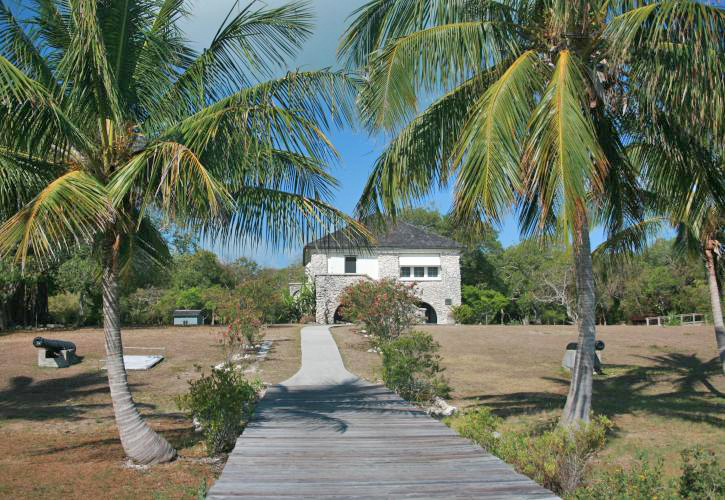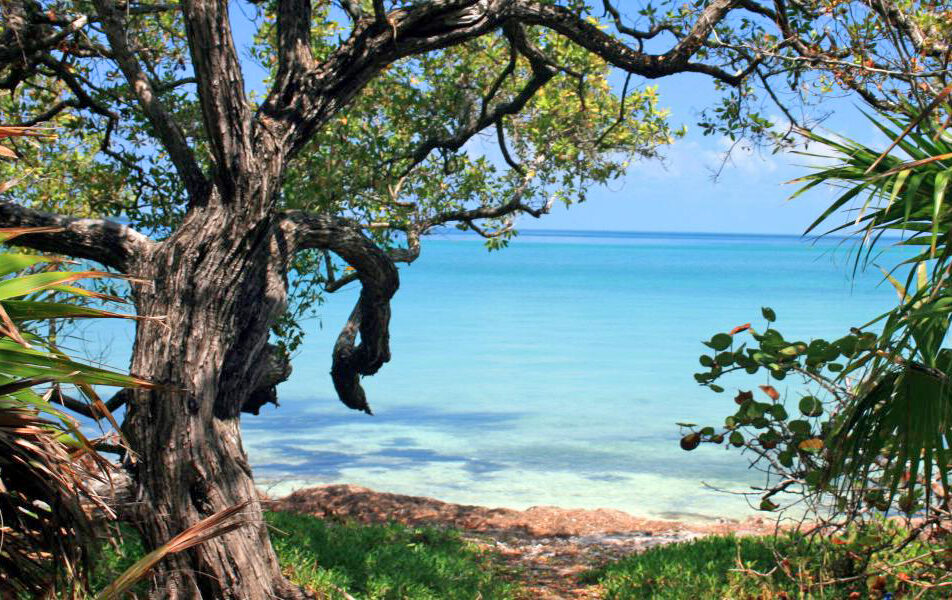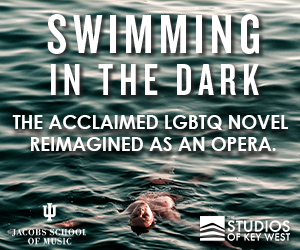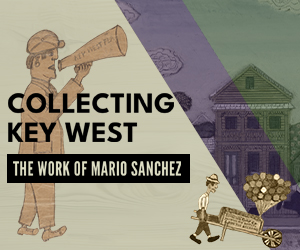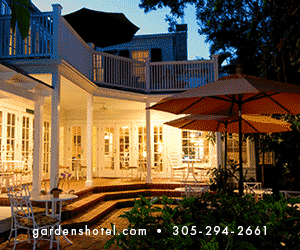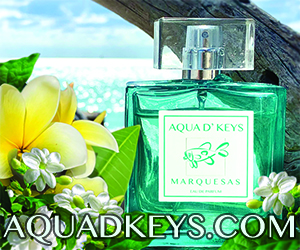Derived from Latin, it means “the wood of life” and is among the densest and heaviest woods on earth. So dense, in fact, that structures built with Lignum vitae wood imported from the tropics survived San Francisco’s 1906 earthquake. Blooming with distinctive deep blue flowers each spring, Lignum vitae is credited with exceptional medicinal properties.
At 79 pounds per cubic foot, it’s so heavy that it sinks. It is also so oily that a sanded piece of wood finishes itself as if it were varnished. There are claims that parts made of Lignum vitae will outlast steel and bronze parts. It has been used for bearings, particularly in the marine industry, for propeller shafts.
Unfortunately, most of the Lignum vitae forests have been lost to development. The best place to see these unique trees in North America is Lignumvitae Key Botanical State Park in the Florida Keys. Listed on the National Register of Historic Places, the 280-acre bay-side island boasts a virgin hardwood hammock containing 1500-year-old Lignum vitae trees and an early Florida Keys pioneer family home. A stone wall believed to have been built by Native Americans.
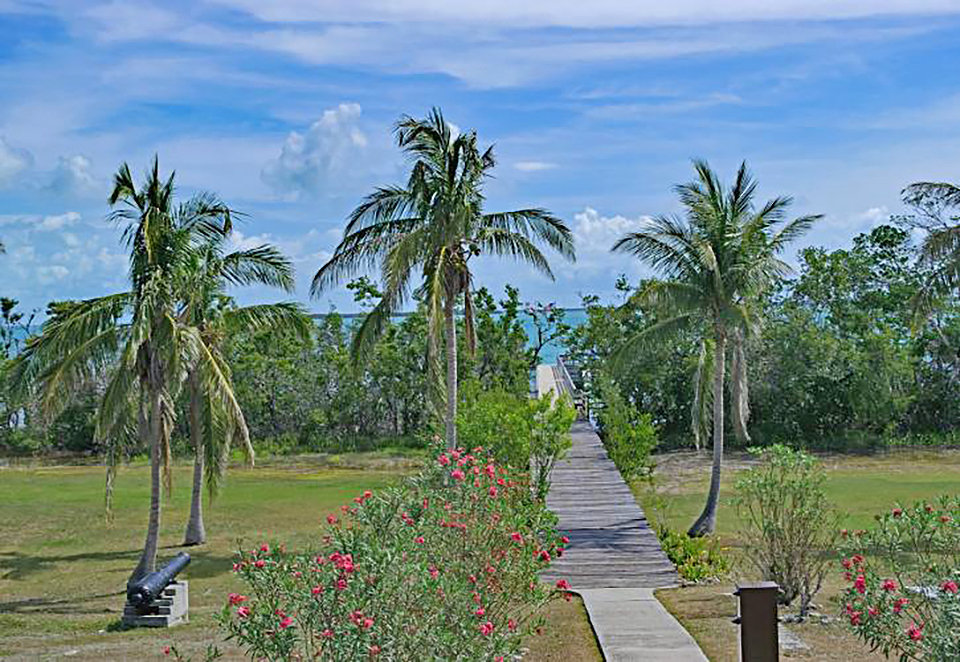 Located about a mile offshore from US 1 in Islamorada, the tiny island was by-passed by Henry Flagler’s railroad and the highway bridges that connected the rest of the Keys, making it one of the last untouched bits of tropical forest in the country. To step ashore here is to take a step back into the past. The park remains a place of wonders, dense with endangered plants, protected insects, and tropical birds. Try to imagine the Florida Keys before civilization. Be-fore air conditioning. Before mosquito control. Get the picture?
Located about a mile offshore from US 1 in Islamorada, the tiny island was by-passed by Henry Flagler’s railroad and the highway bridges that connected the rest of the Keys, making it one of the last untouched bits of tropical forest in the country. To step ashore here is to take a step back into the past. The park remains a place of wonders, dense with endangered plants, protected insects, and tropical birds. Try to imagine the Florida Keys before civilization. Be-fore air conditioning. Before mosquito control. Get the picture?
In 1919, William J. Matheson, a wealthy Miami chemist, saved this tiny island and built a caretaker’s house with a windmill for electricity and a cistern to collect fresh water from the copper gutters. The caretaker’s function was to protect the island, which eliminated poachers from cutting down the sacred trees for lumber and firewood and prevented them from harvesting the highly valued tree snails. Poachers often burned an island after collecting snail shells to make their shells more rare.
Thanks to Matheson, Lignumvitae Key became the only virgin hardwood hammock in the Keys. He never did build a home for himself on the island, preferring to stay on his yacht at the dock where it was cooler, and the unencumbered breezes reduced the number of mosquitoes. Over 200 hundred years later, little has changed. Today, Matheson’s hideaway is the visitor center for this island forest and a monument to an earlier time. Crafted from native stones and ancient fossils, the house still has many original furnishings. It serves as a museum for the island.
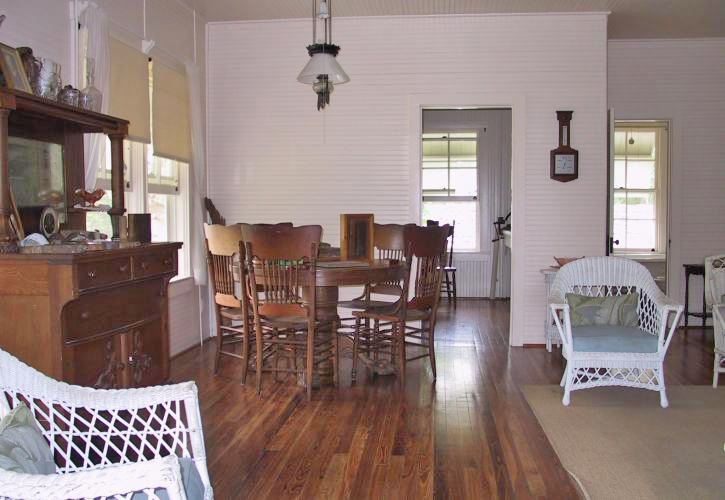 Inside, you’ll find a variety of intriguing displays, old photos, and historical information about the island’s caretakers backdropped by the woody smell of Dade pine floors and a panoramic view of the grounds. Outside the house are several cannons from the British Warship HMS Winchester, which wrecked on a reef in 1665, and one of the caretaker’s original work vehi-cles: a rusting 1937 Dodge dump truck.
Inside, you’ll find a variety of intriguing displays, old photos, and historical information about the island’s caretakers backdropped by the woody smell of Dade pine floors and a panoramic view of the grounds. Outside the house are several cannons from the British Warship HMS Winchester, which wrecked on a reef in 1665, and one of the caretaker’s original work vehi-cles: a rusting 1937 Dodge dump truck.
Enter the hammock forest. Here, you’ll walk in the shade of trees with strange names like mastic, strangler fig, poisonwood, pigeon plum, and gumbo-limbo. Look for the “jewels” of the forest, the Liguus tree snails that feast on the lichens that grow on the tree trunks. Keep your eye out for flitting butterflies, especially the rare Florida purple-wing that uses crabwood trees as its host species.
The virgin tropical forest that thrives here is typical of the kind of scenery that was once enjoyed on most of Florida’s Upper Keys. As the Keys were developed to accommodate an increasing number of people, most of the unique vegetation was scraped away, making the tropical forest of Lignumvitae Key a very rare and unique place.
Lignumvitae Key Botanical State Park is open Thursday – Monday from 8am – 5pm. Access to the island is by private boat or charter boats at nearby marinas around mile marker 78.5. For more info, call 305-664-2540 or visit floridastateparks.org/LignumvitaeKey.
Park Activities
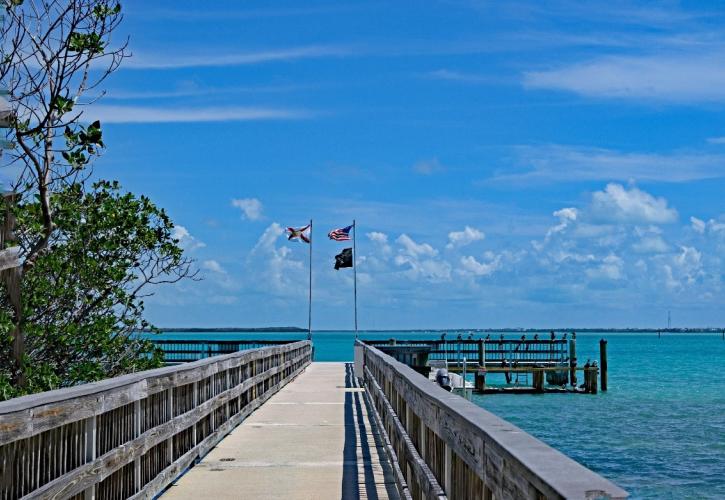 Boating
Boating
You can rent powerboats and kayaks from “Robbie’s Marina” or other local marinas. Knowledge of the channels is critical because of the surrounding shallow grass flats. Excursions outside the channels can lead to boat damage, environmental damage, heavy fines, and possibly a criminal record. Kayaks and canoes can float across most flats, offering spectacular chances to see various wildlife, from dolphins and manatees to sharks and rays.
Fishing
Anglers can fish for various species, from Bonefish on the flats to Tarpon in the channels. Snapper, Spanish Mackerel, and Snook are also found in the area. Caribbean Spiny Lobster and Stone Crab are also found in the waters surrounding the park and can be harvested when in season. A Florida saltwater fishing license, with special stamps for Lobster and Snook, is required. Fishing may be done around the island but not within 100 feet of the nearest dock.
Guided Tours
1.5-hour guided walks take place at 10 am and 2 pm, Thursday through Monday. The tour fee is $1 per person. Children under 6 are admitted free of charge. Access to the Key for these tours is limited to privately owned boats or charter boats available at nearby marinas. For reservations, call 305-664-9814. The tour boat departs 1/2 hour before the listed tour times.
Snorkeling
Some local marinas, as well as “Robbie’s Marina,” run Eco-tours that involve brief stops at the island and snorkeling around the island and out on the reef. Remember, all snorkeling requires a diver-down flag. All snorkeling must be conducted 100 feet from the nearest dock.
Happy Adventuring!

